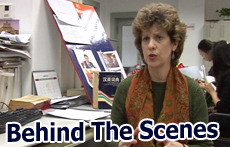Full Text: Report on central, local budgets
(Xinhua)
Updated: 2010-03-16 16:23
The following is an overview of the major issues in the implementation of the budgets in 2009:
1. Fiscal revenue of the central government
It was more difficult in 2009 than in any other recent year to reach the budgeted figure for fiscal revenue. Financial departments at all levels as well as tax and customs departments resolutely implemented the decisions and arrangements of the central leadership, conscientiously carried out a proactive fiscal policy, energetically promoted steady and rapid economic development, and laid a foundation for increasing revenue. At the same time, they genuinely made fiscal management more scientific and meticulous, strictly collected and managed revenue in accordance with the law, adopted measures to increase revenue such as adjusting the sales tax on tobacco products and pursuing taxpayers with unpaid tax bills from previous years, and ensured they reached their budgeted revenue targets for the year.
Main sources of revenue in the central budget. Domestic VAT revenue was 1.391599 trillion yuan, 95.6% of the budgeted figure and an increase of 3.1%. The shortfall was mainly due to decreased revenue from a decline in producer prices of manufactured goods. Domestic sales tax revenue was 475.912 billion yuan, 107.3% of the budgeted figure and an increase of 85.3%. Surplus revenue derived mainly from increasing tax rates on tobacco products during implementation of the budget. Revenue from VAT and sales tax on imports was 772.915 billion yuan, 96.7% of the budgeted figure and an increase of 4.6%. Revenue from customs duties was 148.357 billion yuan, 78.1% of the budgeted figure and a decrease of 16.2%. The main reason for this shortfall was that the total volume of imports fell considerably short of predictions. VAT and sales tax rebates on exports amounted to 648.656 billion yuan (which represents a decrease in revenue by the same amount), 96.7% of the budgeted figure and an increase of 10.6%. The main reason for this shortfall was that the total volume of exports fell considerably short of predictions. Corporate income tax revenue was 761.882 billion yuan, 100.2% of the budgeted figure and an increase of 6.2%. Personal income tax revenue was 236.672 billion yuan, 99% of the budgeted figure and an increase of 5.9%. Revenue from stamp tax on securities transactions was 49.504 billion yuan, 202.1% of the budgeted figure and a decrease of 47.9%. Revenue from this source exceeded the budgeted figure because securities transactions exceeded expectations. Revenue from vehicle purchase tax was 116.317 billion yuan, 119.9% of the budgeted figure and an increase of 17.5%, mainly due to the rapid increase in sales of motor vehicles. Non-tax revenue was 253.666 billion yuan, 123.6% of the budgeted figure and an increase of 48.2%. This increase was mainly attributable to the collection of back taxes owed by enterprises for special surcharges on oil sales.
2. Main expenditures in the central budget
In accordance with the decisions and arrangements of the central leadership, the 2009 budget called for further improving the structure of expenditures, and increasing spending on agriculture, education, medical and health care, social security, employment, low-income housing, science and technology, and environmental protection. In the course of implementing the budget, reserve funds were also used mainly in the aforementioned areas, thereby providing assurances for important expenditures, including central government spending and transfer payments to local governments.
1) Total spending on agriculture, forests, and water conservancy came to 350.124 billion yuan, 101.6% of the budgeted figure and an increase of 79.293 billion yuan or 29.3%. This sum consisted of 31.869 billion yuan of central government spending and 318.255 billion yuan of transfer payments to local governments. We improved the dynamic mechanism for adjusting general subsidies for agricultural supplies and provided subsidies for superior varieties of rice, wheat, corn and cotton throughout the country; provided subsidies for superior varieties of soybeans throughout the northeast and initiated trials of subsidies for growing potatoes using pre-elite seeds; and provided subsidies for purchasing agricultural machinery and tools in all farming and herding counties of the country. Spending on these subsidies amounted to 112.35 billion yuan. We extended the scope of subsidies for conducting soil testing to determine appropriate fertilizer formulas to all farming counties in the country. We used 6.5 billion yuan to promote the development of modern agriculture. We spent 16.5 billion yuan on comprehensively developing agriculture, including the upgrading of low- and medium-yield cropland, developing 1.773 million hectares of high-grade cropland, and increasing overall grain production capacity by 3.273 million tons. Subsidies to cover the costs of agricultural insurance amounted to 5.97 billion yuan, and 127 million farming households bought agricultural insurance policies. We implemented a poverty alleviation policy for all low-income rural residents, and raised the levels of assistance. Altogether 19.73 billion yuan in subsidies was disbursed to 40.07 million recipients. We spent 116.87 billion yuan on improving infrastructure for rural areas and agriculture. Considerable support was given to the South-to-North Water Diversion Project and other major water conservancy projects. We reinforced 3,970 large and medium-sized reservoirs and dilapidated key small reservoirs. Some 60.69 million rural residents benefited from the Rural Water Safety Project. The area of national public forests funded by the central government through the forest ecological conservation fund was expanded to 69.93 million hectares.


